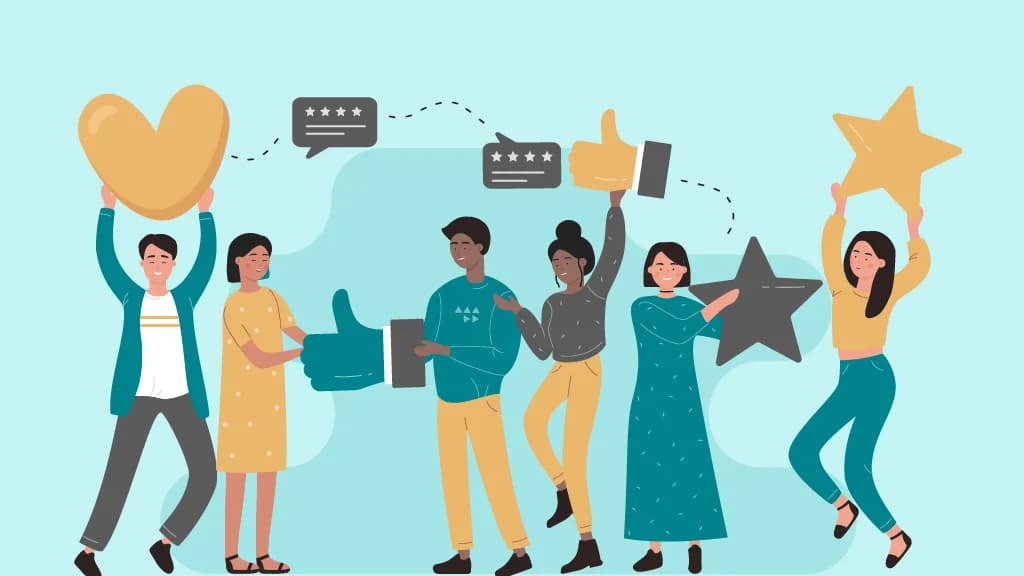9 Steps to Discover the ‘Culture-Fit’ Employee for Your Workplace

Team AdvantageClub.ai
April 28, 2025

Hiring isn’t just about filling a role—it’s about finding people who truly connect with your company’s values and way of working. When employees align with your culture, they collaborate better, feel more engaged, and stay longer. In fact, PwC’s Global Culture Survey found that 66% of C-suite and board members believe culture has a greater impact on success than strategy or operations.
Using advanced engagement platforms such as AdvantageClub.ai can help streamline the process of discovering and integrating culture-fit employees by improving rewards, recognition, and incentivization techniques. By focusing on meaningful recognition, incentives, and engagement, companies can create an environment where employees don’t just work—they excel.
A strong culture fit leads to higher job satisfaction, stronger teams, and a thriving workplace. But how do you spot the right match? From understanding culture fit vs. culture add to asking the right culture-fit interview questions, we break down nine steps to hiring people who will truly belong.
Understanding Culture Fit
Culture fit isn’t about employing people who are all the same. The main focus should be ensuring that their values, work methods, and attitudes align with your organization’s ethos. Employees who actually connect with the workplace culture are more satisfied, engaged, and dedicated to the company’s success. In fact, according to a survey, 46% of job seekers consider company culture to be extremely important when applying to a company.
The Role of Engagement Platforms in Fostering Culture Fit
Building a strong company culture takes more than words—it requires action. A well-planned recognition and engagement strategy makes all the difference. Engagement platforms bring culture to life by recognizing outstanding work, rewarding positive behaviors, and promoting employee well-being.
AdvantageClub.ai is one such platform that helps organizations achieve this. The platform empowers companies to cultivate a thriving environment where employees feel connected, motivated, and appreciated. It reinforces your organization’s core principles, making employees feel valued and connected.
If you want to attract and retain culture-fit employees, these nine steps will help you get there.
Step-by-Step Guide to Identifying Culture-Fit Employees
1. Define Your Company Culture
To attract culture-fit employees, you must first understand your own culture. Begin by outlining your company’s basic principles, goals, and vision. Do these ideas accurately reflect your team’s daily operations? Conduct employee surveys and leadership assessments to gain an accurate picture of your workplace. Are the staff engaged? Does your organization adhere to its declared values?
Once you’ve defined your culture, use it as a guiding factor in your hiring process. A well-articulated culture attracts candidates who share your values, resulting in lower turnover and a more engaged workforce.
2. Develop a Culture-Fit Profile
What does an ideal employee look like at your company—beyond technical skills? A culture fit profile should identify the characteristics and behaviors that contribute to your organization’s success. If collaboration is a top priority, seek applicants who thrive in team environments. If innovation is important, look for people who welcome change and creative problem-solving.
Collect feedback from leadership, HR, and employees to construct a comprehensive profile. This gives recruiting managers a clear framework to evaluate candidates and to know how well they fit the company’s work style and values.
3. Craft Targeted Job Descriptions
Your job postings should do more than list qualifications—they should paint a picture of life at your company. Use language that accurately depicts your work environment, whether it is formal and professional or fast-paced and lively. Emphasize your beliefs, expectations, and organizational culture.
For example, if teamwork is a top priority, include cooperation opportunities and team-driven initiatives. If work-life balance is important, emphasize flexible scheduling or wellness initiatives. A well-crafted job description naturally attracts candidates who resonate with your company’s ethos while deterring those who may not be a great fit.
4. Implement Culture-Focused Interview Questions
Resumes and technical skills only tell part of the story—interviews are your chance to assess how well a candidate fits into your workplace. Incorporate behavioral and situational questions that align with your core values. For example, if teamwork is important, ask them to explain a moment when they worked together on a hard assignment. If innovation is important, ask how they have tackled problem-solving in previous roles. Examine their communication style and interpersonal skills to see if they would match your current team dynamic. Hiring managers can make more strategic decisions by asking culture-specific questions. This ensures that new hires are compatible with both the job requirements and the company’s general work environment.
5. Utilize Assessment Tools
Digital assessment techniques can provide vital information about a candidate’s personality, work style, and cultural compatibility. You can find people who share your beliefs with personality testing, behavioral assessments, and cultural surveys. Platforms such as AdvantageClub.ai can provide important information by analyzing employee engagement and motivation. These tools go beyond gut instincts and provide data-driven insights to help with hiring decisions.
The data-driven insights eliminate bias from the hiring process, resulting in a fair and uniform review of all candidates. They can also anticipate how well a candidate will fit into your organization, boosting the likelihood of long-term success.
6. Engage Current Employees in the Hiring Process
Including current employees in the hiring process helps ensure that new hires actually match the corporate culture. Peer interviews, casual team meetings, and feedback sessions provide personal insight into how a candidate interacts with future colleagues. Moreover, when employees play a role in hiring, they feel a stronger connection to the workplace and are more invested in supporting new teammates. For candidates, it’s a great way to experience the company culture before they commit. Making hiring a team effort strengthens relationships and increases the chances of long-term success.
7. Leverage Engagement Platforms for Onboarding
Onboarding is where culture fit either takes root—or fades fast. A structured and engaging onboarding process helps new hires feel welcomed and aligned with company values from day one. Tools like Advantage Pulse can enhance this process with feedback on onboarding experiences and recognition programs. And the impact is huge. According to a Glassdoor report, employees who go through a strong onboarding program are 69% more likely to stay for three years or more. By creating an engaging, culture-driven onboarding experience, companies set new hires up for long-term success and deeper connections within the organization.
8. Monitor and Evaluate Cultural Integration
Culture fit is not a one-time process; it requires constant effort. Regular check-ins, peer comments, and employee surveys can all assist in determining how well new recruits are adapting. Participation in award programs, team activities, and collaborative efforts can all show how connected people feel to the culture. If a new employee appears distant, proactive measures such as mentoring, coaching, or more training can assist in closing the gap. A great culture is more than just recruiting the appropriate people; it is about always ensuring that they feel valued and aligned with the company’s mission.
9. Foster Continuous Cultural Development
A great workplace culture isn’t static—it evolves as the company grows. That is why it is critical to continue reinforcing key values through leadership development, diversity and inclusion initiatives, and continuing education opportunities. Platforms such as AdvantageClub.ai play an important role in recognizing and rewarding behaviors that represent company values, helping to keep culture at the heart of everyday work. When organizations actively invest in cultural development, employees stay engaged, motivated, and committed to long-term success. The key isn’t just hiring culture-fit employees—it’s creating an environment where they can thrive.
Culture Fit vs. Culture Add
A fine balance of culture fit and culture add is necessary to build a good workplace culture. Culture fit refers to employing people whose values, beliefs, and actions are consistent with the existing organizational culture. The approach promotes cohesion, teamwork, and seamless integration, thus reducing team friction. However, hiring only for cultural fit can result in a homogeneous workforce with no diversity of thinking.
That’s where culture-add comes in. Instead of simply blending in, these employees bring fresh ideas, challenge outdated processes, and help the company evolve. The best workplaces strike a balance—welcoming employees who align with core values while also embracing those who push boundaries and introduce new ways of thinking.
Strategic Hiring for a Stronger Workplace
A well-rounded hiring strategy ensures teams stay both cohesive and dynamic. By prioritizing both culture fit and culture add, companies create environments where employees feel connected while continuously growing and innovating.
Platforms like AdvantageClub.ai help organizations strengthen this process by enhancing employee engagement, recognition, and retention. When employees feel valued and aligned with company culture—while also encouraged to bring in new perspectives—they stay motivated and contribute to long-term success.
By making thoughtful hiring decisions, companies can build a thriving workplace where people feel supported, inspired, and excited to grow together.





